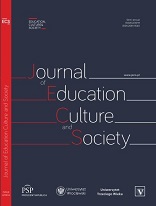COMBINED THERAPY FOR PATIENTS AFTER ISCHEMIC STROKE FROM THE POINT VIEW OF COMPREHENSIVE REHABILITATION
COMBINED THERAPY FOR PATIENTS AFTER ISCHEMIC STROKE FROM THE POINT VIEW OF COMPREHENSIVE REHABILITATION
Author(s): Michal Vostrý, Ladislav ZilcherSubject(s): Social Sciences, Psychology, Experimental Pschology, Neuropsychology, Clinical psychology
Published by: Fundacja Pro Scientia Publica
Keywords: stroke;cognitive therapy;combined therapy;psychomotor therapy;robotic therapy;social adaptability
Summary/Abstract: Aim. The main objective of the research was to find out the efficacy of the combined therapy suitable for patients after ischemic stroke (promoting social adaptability). The therapy itself is then focused on robotic, psychomotor and cognitive therapy. Methods. 58 probands diagnosed with a stroke participated on the research (ischemic type I60-I69; ICD-10: International Classification of Diseases and Related Health Problems), out of which 49 were male patients ages between 50-55 and women between the age of 52–57. The data collection was finished in 2017-2018. Indicators were evaluated and tested firstly after the initiation of the combined therapy, then after 15 weeks of intensive therapy, which took place 4 times a week 50 minutes for each patient participating in the research. Results. A statistically significant difference was recorded among all observed indicator areas (somatic, psychological, social and even cognitive), in which patients scored during the final testing significantly better results, than during the initial testing. Conclusion. The results of the research point to the fact, that combined therapy of robotic, psychomotor and cognitive can have positive effect, and is suitable as a treatment for patients after ischemic stroke, regarding their productive age. Positive results have been therefore overt among all tested areas.
Journal: The Journal of Education, Culture, and Society
- Issue Year: 11/2020
- Issue No: 1
- Page Range: 119-125
- Page Count: 7
- Language: English

